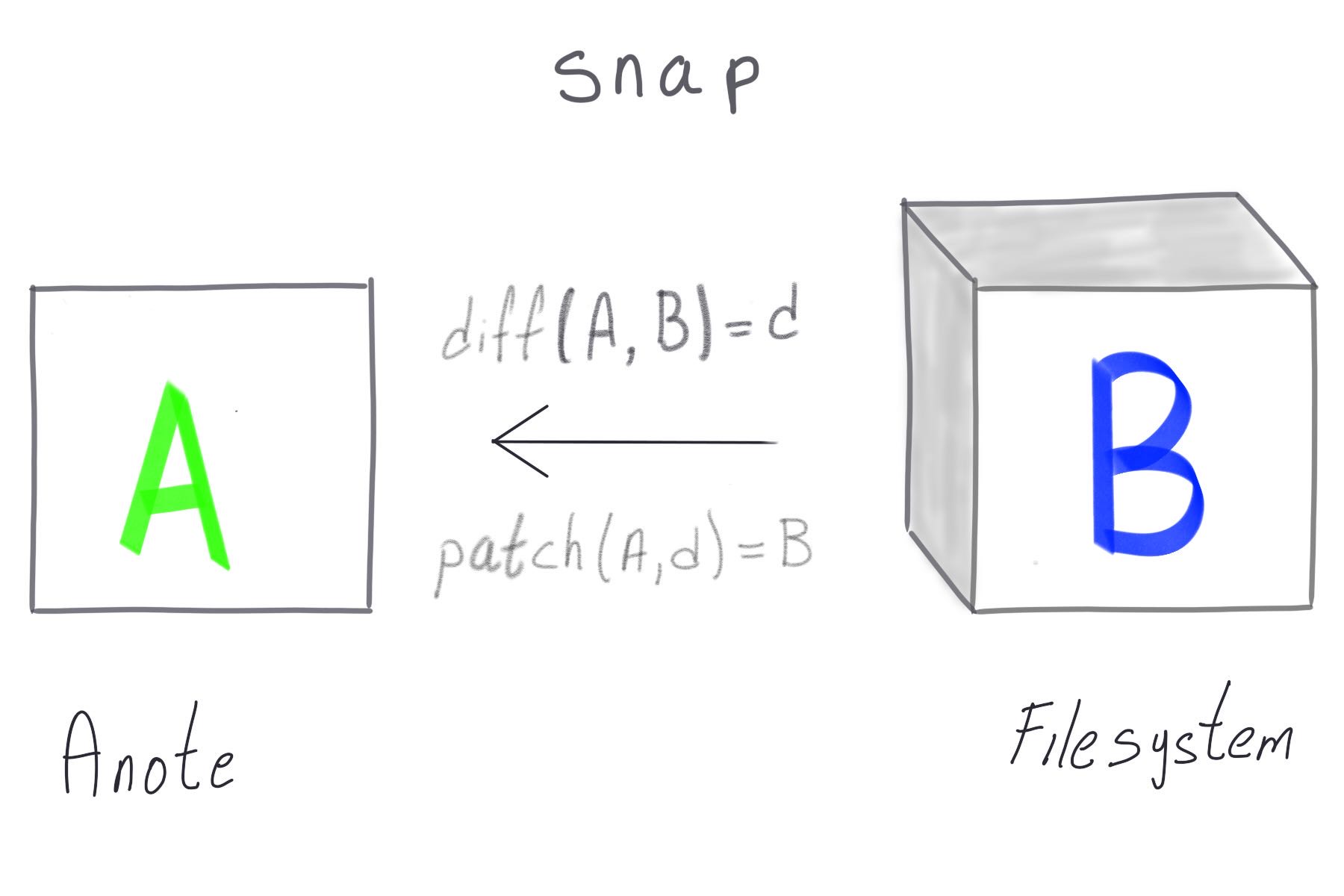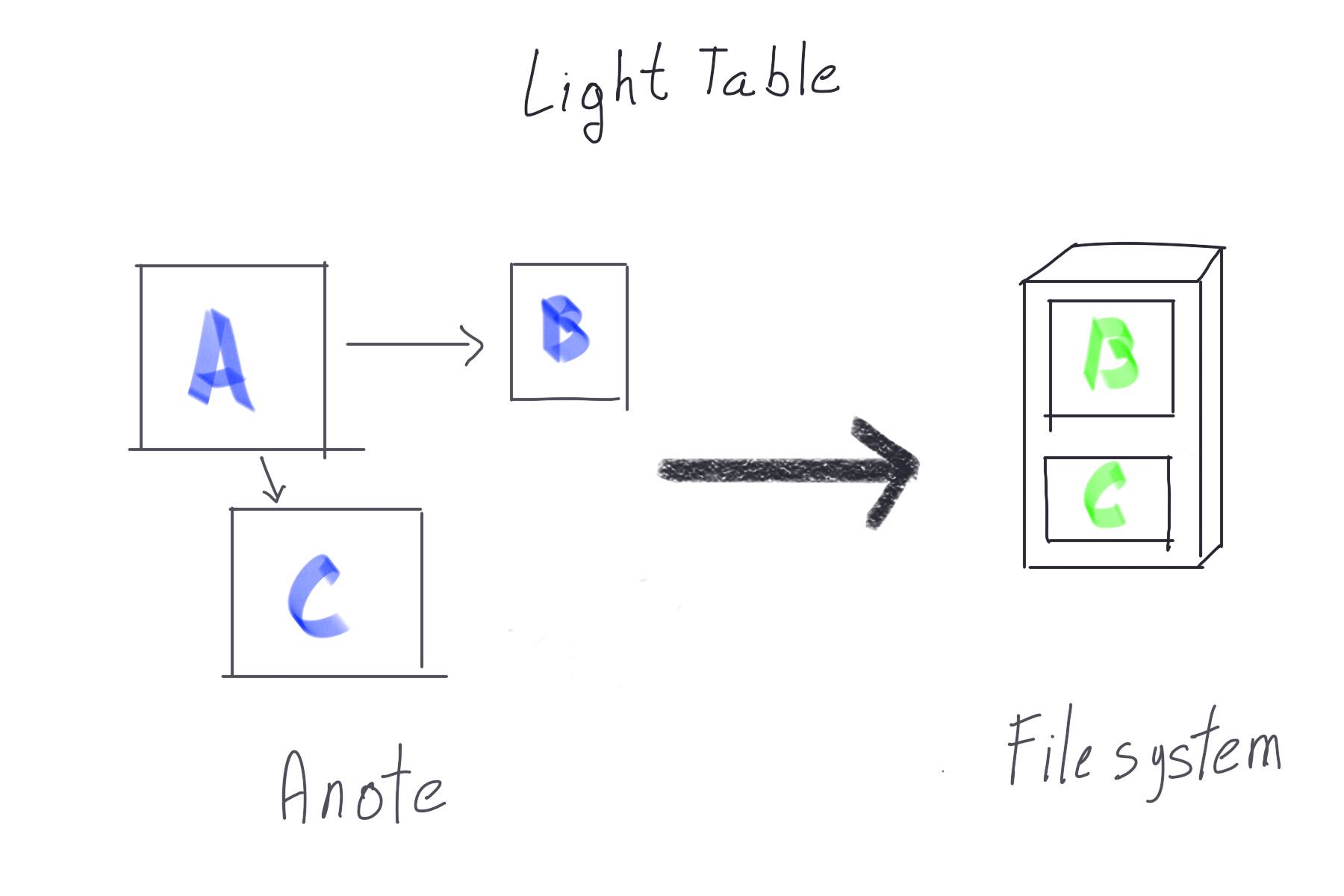Anote (Antoine's Notebook)
Because your creative process is not always linear nor explicable
A Version Control System is a manual or automatized system to track
changes to a set of files over time.
The main objective is to be able to (easily) recall past versions
[1].
Perhaps the most straight-forward approach to version control is
filename based versioning.
In it, the user makes copies of the file of interest and changes its name
in such a way that the new name contains enough information for the user
to identify the version.
For example, if you work on a proposal up to a
point where you are happy with the results and submit it for review,
it might be a good idea to save a copy of the submitted proposal with a
filename like submission_for_first_review.
This system might be get a bit tricky over time as the submit-review cycle
grows or branches. For example, if you have three reviewers giving
you feedback asynchronously you can either wait for all the reviews to
arrive and then apply all the changes or you can start to work on each
review as they arrive.
To keep track of the changes you could name your files
first_review_1st_reviewer_changes
and so on.
The aggregation of the files
first_review_1st_reviewer_changes,
first_review_2nd_reviewer_changes and
first_review_3rd_reviewer_changes
would yield the version submission_for_second_review.
Even if you only have self-review a similar process occurs and it is quite
possible to end up with meme-like names:
final_final_really_final_version.
Automatic version control systems like CVS, Subversion and Git lifts this
burden, the key concept is: save a snapshot of this.
You may give a description of the snapshot to explain why you took it,
and how or why the object you are tracking changed from its previous
version.
You can use these kind of systems locally for your work, I started to use
CVS and Subversion in the early 2000's and later Git;
If I'm going to create something that will change overtime, then I create
a git repository in my local server and clone copies on my work computers.
I feel protected in case of failure and the history of my repositories are
somewhat comprehensive.
But my personal relationship with git is one of love-hate.
Git has a plethora of features and what I'm going to describe here, namely,
Anote, can be fully (and better) simulated under Git, so if you will, Anote
can be seen as a trivial renaming of Git concepts and commands.
Arguably Git (and its flavors) is the de facto version control system; it
is fast, simple (in ideas), distributed, allows parallel development, and
can cope with big code-bases [1].
Git is designed to enhance collaboration between developers.
Developers must be able to communicate clearly in natural language, hence
the messages that come with changes must be (1) non empty and (2) clear.
If the developers in charge of modifying a Git repository are not convinced
of the value of the changes, then, said modification is rejected or asked
to be changed.
This communication loop is evident in what are known as
pull-requests.
A feature equivalently implemented by the Linux kernel community as
development mailing lists.
The natural language explanations of changes also known as commit messages,
are a valuable historic documentation resource.
Projects like the Linux kernel have strong formatting and guidelines to
write such messages.
When I look at a Git repository I can not avoid to have a linear
view of the development process, even if the repository has thousands of
branches, they all lead to the same place, the main/master branch.
No one in sane mind would keep alive work that was and will not be merged
into any significant branch.
This use of Git combined with strictly formatted and meaningful commit
messages tells a story of a finished product, a system evolving
steady.
I feel Git is designed as a Depth-first development story telling.
You start at some point, say v.0.1 and steadily evolve to v.0.2 and so on
to v.10.0 and beyond.
Each evolution comes with a Changelog explaining what has changed from the
last version to the current version.
This is a perfect way to tell a story over time.
Reading the Linux kernel commit history is like reading a book.
However, when I engage in creative, non-mechanical endeavors I want to:
(1) Keep a log of what I have done (2) Don't have to explain myself every
time and (3) Be able to seek inspiration from several previously tried
paths.
That is, I want to have a version system that is designed as a Breath-First
development story telling.
Anote is designed to track individual files over time with no clear
evolving structure whatsoever.
It is like our paper notebook, it is not meant to be understood by anyone
but us, we develop color codes, symbols, alignments and so on.
Anote basic block is the snapshot, that is, the action:
record this version.
To recall previous versions Anote uses checkout to: recover this
version.
In its simplest form, Anote uses positive integers to distinguish
between versions.
When a snapshot is requested for a file, a
diff is taken between the last known
version and the current state of the file.
The last known version is either the last snapshot taken or a
checked out version.
Anote supports the checkout of different versions at the same time, this is
called a Light Table to reference the light tables artists use to
put together artwork or review films.
Upon destruction of a Light Table, a snapshot
is taken and each checked out version in the Light Table is associated
with the new version.
The idea of a Light Table is to make explicit the collaboration required
to arrive at the version registered upon the Light Table's destruction.
The following drawings depict these three operations.
The arrows show the flow of information.



All these operations can be modeled with edge-labeled graphs.
The semantics of a "d" labeled AB arrow (
)
in Anote is: Version B was
created from Version A by applying the change "d".
In principle the semantics is not different from any version control
system, however, it allows the creation of unstructured graphs.
The path A → B → C → D depicts a sequence of
modifications much like a linear Git branch evolution.
The graph B ← A → C depicts a couple of branches
emerging from A.
Anote does not requires branches to be named, if a snapshot is taken of a
version that already has a successor, a new "branch" is created to
allocate the snapshot.
Conversely, the graph B → A ← C shows that creating A was a
collaboration between B and C.
There is no notion of conflict or merging, just
transformation and gluing.
Not requiring a message for snapshots or names for conceptual branches,
free us to name a version or explain it when we require it for our work,
not before.
Anote is designed to work independently of Git.
For example, if you require to patch a complicated bug, you may create a
new Git branch and track the file with Anote.
You may now modify the file back and forth, explore different fixes while
keeping track of the changes to later explore how to tidy up your work
into an elegant fix.
Once you are happy with the results then you are ready to commit to the
Git branch and have those changes merged into a testing branch.
Internally Anote works on diff files to represent a transformation, but
this approach might be inadequate for human-reviewing purposes.
Therefore, I envision modular expansion of Anote to accommodate external
parsers and report changes at a higher level of abstraction.
In early 2000's I bought a Spanish translation of the 50th anniversary
edition of Le petit prince (The little prince) by
Antoine de Saint-Exupéry.
The edition contains copies of annotated manuscripts that to me were a
treasure because Le petit prince is one of my all-time favorite
books.
This is the main reason for Anote name. But not the only one
During my time in Copenhagen, Denmark, like many I fell in love with
Ib Antoni's (the man who drew Denmark) designs.
An exhibit at the Museum of Copenhagen many of Ib's annotated designs and
notebooks were shown, again this shows all the work behind the finished
canvas.
So Anote can be as well read as: Antoni's Notebook, but since Antoine came
first to my life, history takes precedence.
Note: I refuse to call it AA's Notebook.
[1] Chacon, S. and Straub, B., "Pro Git", Apress, 2nd Ed., 2014.
Online version: https://git-scm.com/book/en/v2
(last accessed: March 16, 2025)
Copyright Alfredo Cruz-Carlon, 2025


